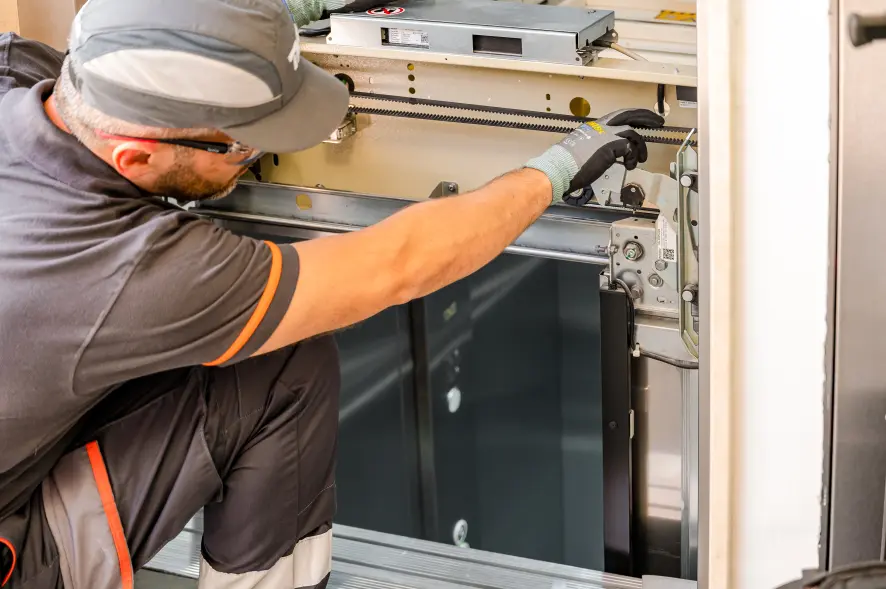Troubleshooting Tips for Common Issues With Handicapped Platform Lifts
When it comes to ensuring the smooth procedure of handicapped platform lifts, running into usual issues can interrupt the functionality and availability they supply. Allow's discover some practical suggestions to resolve these common issues and guarantee the proper performance of disabled platform lifts.
Power Supply Issues
When coming across power supply problems with disabled system lifts, the first action is to systematically analyze and fix prospective sources of power disturbance. If the power source is validated to be functioning, continue to examine the power cable for any indications of damage or wear that can be triggering a disturbance in the power supply.

Control Board Issues
Control panel malfunctions on impaired system lifts can dramatically restrain their functional efficiency and position safety dangers to individuals. The control board serves as the main user interface for running the lift, enabling users to start activity, control rate, and take care of quits at various levels. When the control panel runs into problems such as less competent switches, irregular actions, or display breakdowns, it can interfere with the entire lift procedure.
One usual problem with control board is electrical mistakes, which might result from circuitry issues, power surges, or component damages. These mistakes can create the control panel to malfunction or end up being unresponsive, making it hard for customers to run the lift safely. In addition, environmental aspects like dampness or severe temperature levels can also affect the control board's performance, bring about prospective failures.
To deal with control panel troubles effectively, regular upkeep checks and inspections are important. On a regular basis cleaning up the control panel, evaluating circuitry connections, and ensuring appropriate calibration can assist avoid breakdowns and make certain the lift operates smoothly. In cases of relentless issues, speaking with a certified service technician for repairs or substitutes is recommended to maintain the lift's functionality and security for customers.

System Stuck or Jammed
In scenarios where the handicapped system lift experiences a system stuck or obstructed, immediate focus and appropriate troubleshooting are critical to make sure the lift's functionality and customer security. When experiencing a platform that is stuck or obstructed, the initial step is to quit any kind of recurring operation of the lift to stop further damages or security risks.
After recognizing and getting rid of any kind of obstructions, attempt to manually move the system to see great site if it liberates. If hands-on efforts are unsuccessful, refrain from using too much force as this can trigger damages to the lift device. In such situations, it is suggested to get in touch with a certified service technician or the lift maker for expert assistance in settling the problem. Motivate and appropriate resolution of a stuck or obstructed platform is necessary to preserve the lift's operational effectiveness and make sure user safety.
Safety And Security Sensor Breakdowns
An important part of impaired platform lifts, safety sensing units play a crucial function in making sure user defense and lift operation. If fixing the sensors does not solve the issue, speak with a certified specialist to carry out a comprehensive assessment and fixing to preserve the lift's safety and security and performance. Regular upkeep and timely resolution of safety sensing unit malfunctions are essential for the risk-free procedure of handicapped system lifts.
Uncommon Noises or Activities
When running a disabled system lift, listening to any kind of uncommon sounds or movements is critical for determining possible concerns that might affect its performance and safety. Unusual sounds, such as grinding, shrilling, or clunking audios, could show troubles with the lift's mechanical components, such as damaged gears, loose bolts, or broken bearings. These issues, if left unaddressed, may lead to malfunctions or perhaps total malfunction of the lift.
Likewise, uncommon her response motions of the system, such as jerking, drinking, or unexpected stops, ought to not be neglected (elevator maintenance). These activities could be a sign of electrical problems, hydraulic system troubles, or irregularities in the lift's programs. Immediately investigating and addressing these unusual activities can stop accidents and make sure the ongoing safe procedure of the system lift
In the event of experiencing uncommon noises or activities, it is recommended to cease using the lift quickly and call a certified specialist for maintenance. Regular maintenance and timely troubleshooting of any unusual signs can aid extend the lifespan of the disabled platform lift and make sure the security of its users.
Conclusion
In verdict, troubleshooting common concerns with impaired platform raises calls for recognizing and addressing power supply problems, control board concerns, platform jams, security sensing unit breakdowns, and unusual noises or activities. By adhering to appropriate upkeep and repairing procedures, individuals can guarantee the find more information risk-free and efficient operation of platform lifts for people with disabilities.